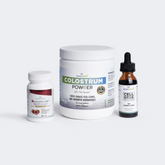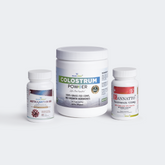Astaxanthin
×
What is Astaxanthin
(3S, 3’S) - Astaxanthin (C40 H52 O4)
A red-orange fat-soluble carotenoid found in algae and aquatic animals
- Primarily found in trans-isomeric form in nature
- Approved as a dietary supplement (nutraceutical) since1999
- Human consumption form derived from microalgae Haematococcus pluvialis
Circadian Rhythm Disruption in Depression
Key Findings in Depression
- 90% of MDD patients have sleep disturbances
- REM sleep latency is shortened
- Abnormal clock gene expression (Bmal1, Per2)
This graph illustrates the fundamental problem - how circadian rhythms become disrupted in depression:
- Normal Pattern: Shows a regular sleep-wake cycle with properly timed melatonin release
- Disrupted Pattern: Depicts the irregular patterns seen in depression with early melatonin release
- Key Symptoms: Highlights that 90% of MDD patients have sleep disturbances, including early waking, fragmented sleep, am poor sleep quality
- Molecular Changes: Notes abnormal expression of clock genes like Bmalı and Perz
How Astaxanthin Affects Circadian Rhythm and Depression
- Modulates neurotransmitters
- Increases BDNF expression
- Reduces oxidative stress
- Protects brain cells
- Regulates clock genes
- Improves sleep quality
This graph shows the potential solution - how astaxanthin might help restore normal rhythms:
- Multiple Pathways : Astaxanthin works through several mechanisms (NMDA/GABA modulation, antioxidant effects, BDNF increase)
- Astrocyte Protection: These pathways converge to protect astrocytes, star-shaped brain cells that are critical for maintaining circadian rhythms
- Dual Benefits: By protecting astrocytes and normalizing their function, astaxanthin may both normalize circadian rhythms and reduce depression symptoms
- Choosing a selection results in a full page refresh.


























